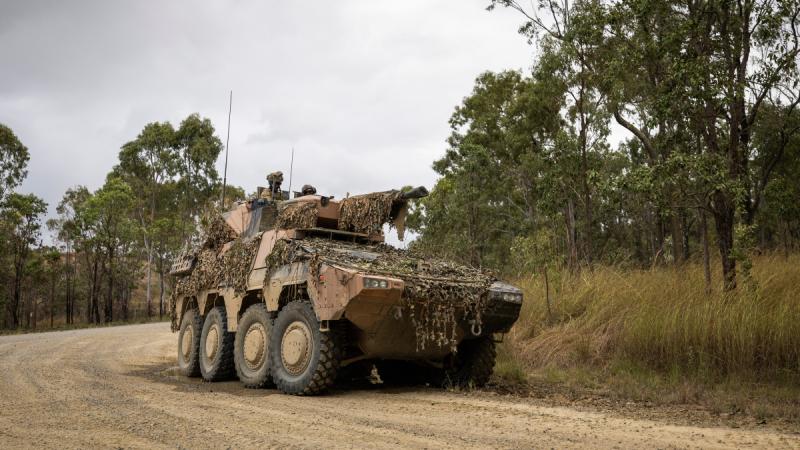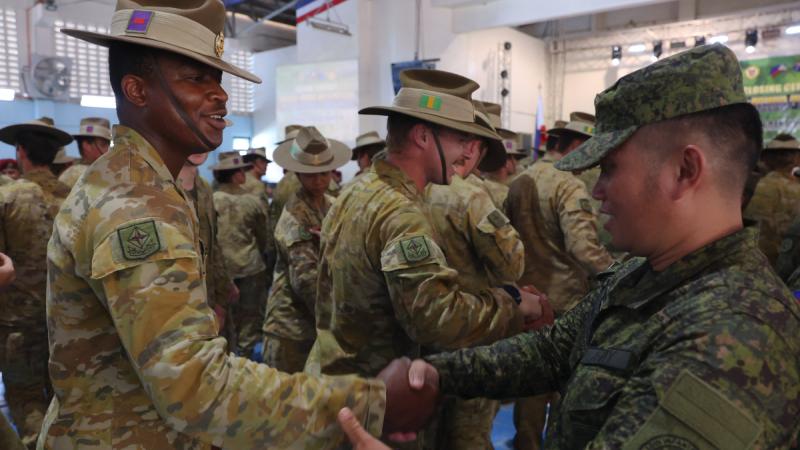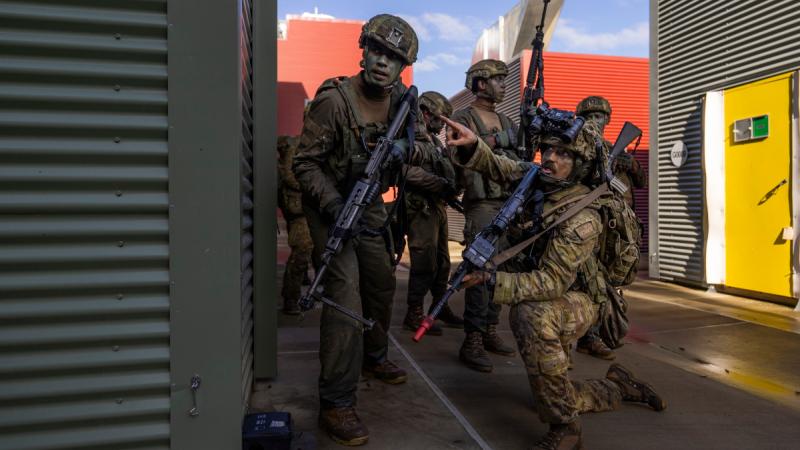17 September 2020
Industry collaboration and knowledge gained while on exchange with the US Navy have secured important self-defence and aviation capability upgrades for HMAS Adelaide.
The ship was due to have its Nulka Decoy System and Advanced Stabilised Glide Slope Indicator upgraded by the team at BAE Systems Australia when travel restrictions were implemented, demobilising BAE’s Melbourne-based team.
Nulka is an Australian-designed and developed active missile decoy system, designed to guide anti-ship missiles away from their targets.
The Advanced Stabilised Glide Slope Indicator provides helicopter pilots with stabilised visual information to guide helicopters to the vessel at sea and at the correct approach angle.
Fire Control and Weapons Work Centres within Fleet Support Unit - South East, BAE, Naval Ship Management, IKAD Engineering, and Marine Technicians Australia used Remote Technology Assist and other means to find efficient ways to collaborate to achieve the capability milestones.
For the team at Fleet Support Unit - South East, combat systems alignment was a challenge they had not faced before, but one they were able to deliver on because of the skills two personnel had gained during a recent two-year training posting with the US Navy at the South-west Regional Maintenance Centre in San Diego.
Chief Petty Officer Electronics Technician Lorne Bramley said it was a great opportunity to use their new skillsets.
“During our personnel exchange programs in San Diego, we developed skills in combat systems alignment, which the US Navy does really well,” Chief Petty Officer Bramley said.
“When the contracting team couldn’t mobilise, it provided an opportunity for us to fully use those skills and embed our knowledge and experience within our workforce.”
Weapons Engineering Manager at Fleet Support Unit - South East Warrant Officer Electronics Technician Saul McLean said the challenge created an opportunity for Navy and industry to look at how they could work together more efficiently in the future.
“This joint venture project has proven that there are options moving forward for Navy and industry to better demonstrate how we communicate and what skillsets are available and can be shared,” Warrant Officer McLean said.
“This has been important for Navy as we continually advance our technological and people capabilities, and continue to build relationships with industry to deliver timely outcomes for our fleet units.”


